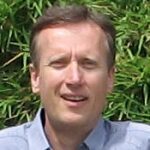Link to Pubmed [PMID] – 24001683
Parasitol. Int. 2014 Feb;63(1):245-53
Leishmania/L. major was identified as the etiological agent of human localized cutaneous leishmaniasis. L. major metacyclic promastigotes/MP – the infectious form transmitted by sand flies – were enriched from axenically-derived cultures and inoculated into the dermis of mice (10(3) or 10(4) luciferase-expressing L. major MP inoculated into the C57BL/6 mouse ear pinna). Quantitative readout assays were then combined with imaging of this L. major-hosting skin site and established i) that a specific period of time – depending upon the L. major load used for the inoculation – is required for the L. major-hosting ear pinna to be continuously populated by a balanced population of functional regulatory and effector T lymphocytes, and that ii) this balance coincides with persisting low numbers of amastigotes in more or less rapidly healing skin. This approach also established that, whatever the MP inoculum load delivered to the primary site, the immune processes that reduce the L. major amastigote population also account for concomitant immunity, namely remodelling of the secondary site – where 10(4) MP were delivered – as a clinically silent niche hosting a small L. major population.



